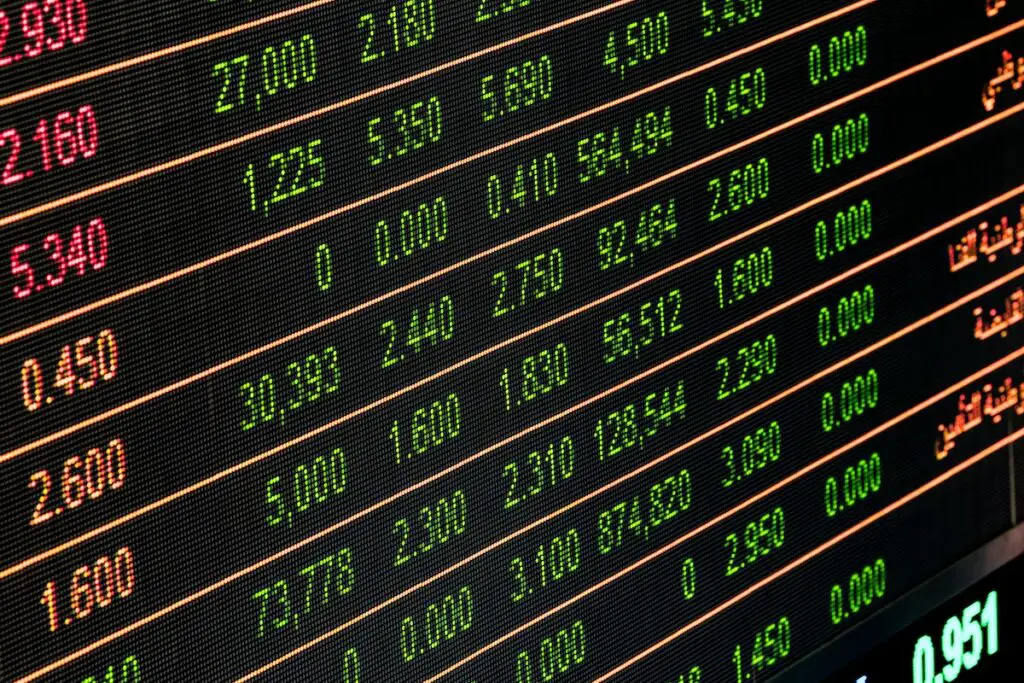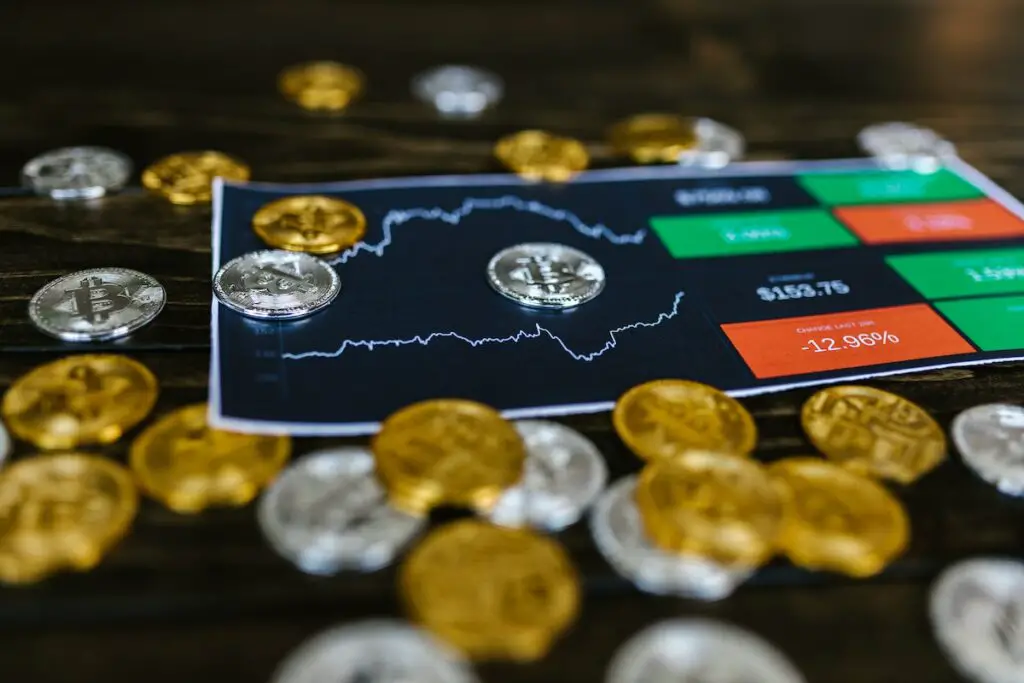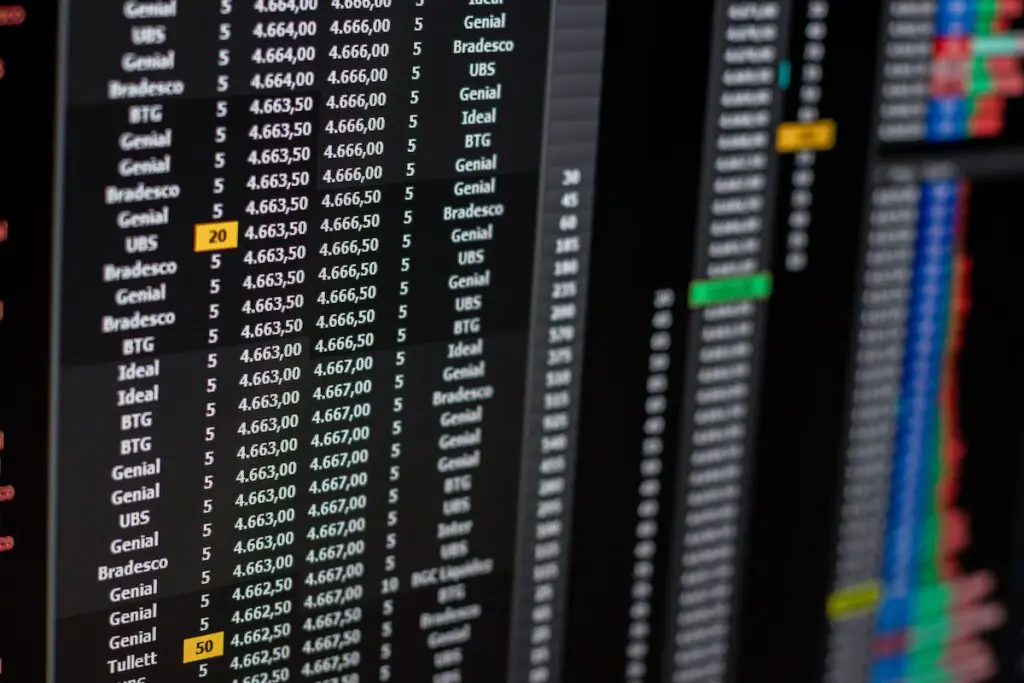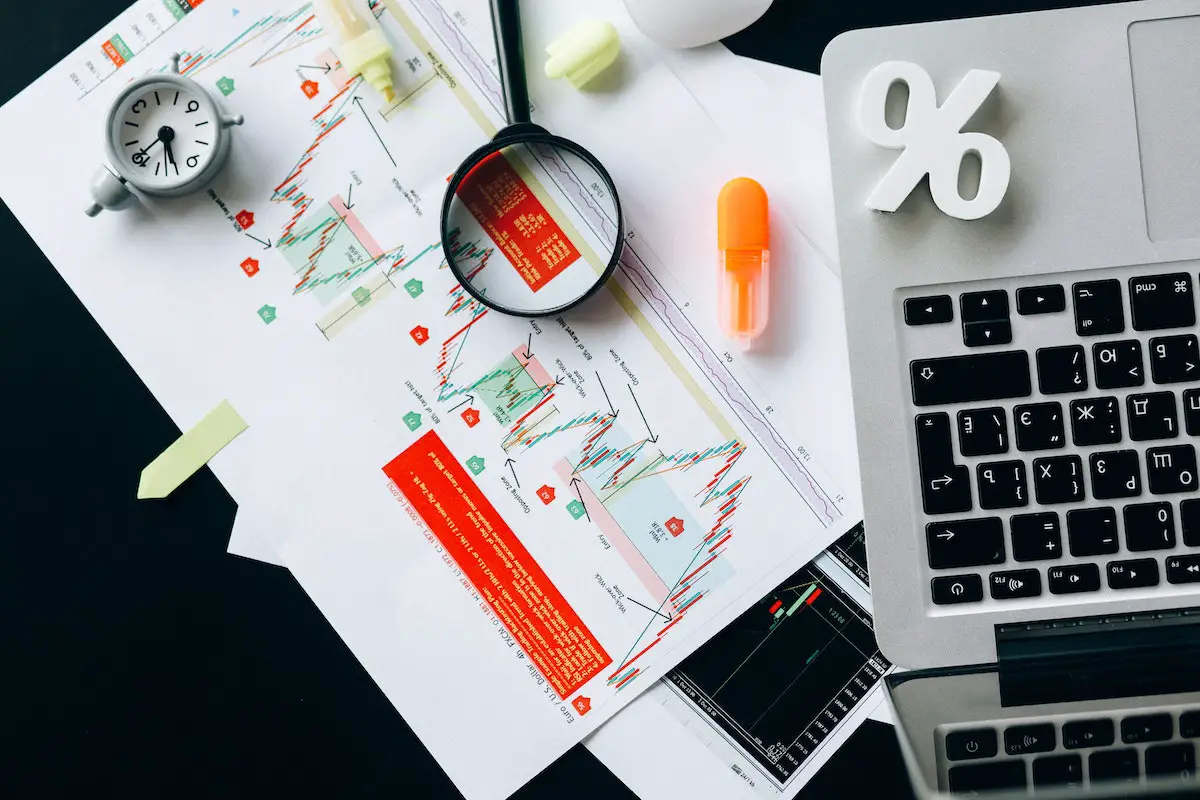In the world of forex trading, understanding leverage is crucial for success. What is the best leverage for forex? Leverage allows traders to control larger positions with a smaller amount of capital, amplifying potential profits or losses.
The best leverage for forex is 1:1 because with this leverage you are simply trading with normal lot size without borrowed money, leverage is a borrowed money and can work for you and also be against you.
Contents
What’s best leverage for forex? It’s important to grasp how leverage can impact your trading outcomes and find the best leverage ratio that suits your trading style and risk tolerance.
This blog post explores the significance of leverage in forex trading, delves into its effects on trades, and introduces the concept of finding the optimal leverage for successful forex trading.
By examining real-life examples and considering factors such as entry points and exchange rates, we aim to provide valuable insights into maximizing your forex trading potential.

Best Leverage for Forex
Best leverage for forex is always 1:1, to maximize profits in forex trading, it is crucial to identify the optimal leverage level.
Different leverage options offer potential benefits that can enhance your overall trading strategy.
Identifying the Optimal Leverage Level
Leverage allows you to control a larger position with a smaller amount of capital. However, finding the best leverage requires careful consideration.
Here are some factors to keep in mind:
- Risk Tolerance: Assess your risk tolerance before selecting a leverage level. Higher leverage amplifies both profits and losses, so it’s essential to choose a level that aligns with your risk appetite.
- Trading Style: Consider your trading style when deciding on leverage. Scalpers who make quick trades may prefer higher leverage, while long-term traders may opt for lower levels.
Exploring Different Leverage Options
Forex brokers offer various leverage options, such as 50:1, 100:1, or even higher ratios. Each option has its own advantages and considerations:
- High Leverage (e.g., 100:1):
- Pros: Allows greater control over larger positions with minimal capital.
- Cons: Increases the risk of substantial losses if trades go against you.
- True Leverage (e.g., 10:1):
- Pros: Offers more conservative trading approach with reduced risk.
- Cons: Requires larger initial capital investment for significant positions.
Enhancing Your Trading Strategy
Finding the best leverage for forex can significantly impact your trading strategy’s success:
- Maximizing Profits: With appropriate leverage, you can amplify potential gains on successful trades by controlling larger positions.
- Managing Risk: By choosing an optimal leverage level aligned with your risk tolerance, you can minimize potential losses and protect your account balance.
Remember to conduct thorough research on different forex brokers and their leverage offerings.
Consider factors like reliability, reputation, and customer support before opening a forex account.

Understanding the concept of leverage in forex trading
Leverage is a powerful tool used by forex traders to amplify their trading positions.
It allows traders to control larger amounts of currency with only a fraction of the total value required.
For example, if a trader has a leverage ratio of 1:100, they can trade $100,000 worth of currency with just $1,000 in their trading account.
How leverage amplifies gains and losses
Leverage works by multiplying both potential gains and losses.
While it can increase profits significantly when trades are successful, it also magnifies losses when trades go against the trader.
This means that even small price movements can result in substantial gains or losses.
The importance of understanding leverage
Understanding how leverage works is crucial for successful forex trading. Traders must be aware of the risks involved and use leverage responsibly.
Without proper knowledge and risk management strategies, excessive leverage can lead to significant financial losses.
To illustrate this point further, let’s consider an example:
- Trader A uses high leverage without fully understanding its implications.
- They enter into a trade with a large position size.
- Unfortunately, the trade moves against them.
- Due to the amplified losses from high leverage, Trader A experiences substantial financial loss.
In contrast:
- Trader B understands how leverage works and exercises caution.
- They carefully manage their risk by using appropriate position sizes and stop-loss orders.
- Even if they experience some losses, they are able to limit their downside due to responsible use of leverage.
Risks and dangers of high forex leverage
Using high leverage in forex trading can be risky and may lead to significant financial losses.
It’s important to understand the potential pitfalls associated with excessive leverage.
One major risk is that high leverage amplifies both profits and losses. While it can magnify your gains, it also increases the potential for substantial losses.
This means that even a small adverse movement in the market can wipe out a large portion or even all of your investment.
How Excessive Leverage Can Lead to Significant Financial Losses
When traders use high levels of leverage, they are essentially borrowing money from their broker to make larger trades than their account balance allows.
While this can potentially result in higher profits, it also exposes them to greater risks. If the market moves against you, those borrowed funds can quickly deplete your account balance.
For example, let’s say you have a leverage ratio of 100:1, which means you’re trading with $100 for every $1 in your account.
If the trade goes against you by just 1%, you would lose all your initial investment.

The Importance of Risk Management when Dealing with High Leverages
Given the risks involved, it is crucial to implement effective risk management strategies when dealing with high leverages in forex trading:
- Set strict stop-loss orders: These orders automatically close out your position if the market moves against you beyond a certain point, limiting potential losses.
- Use proper position sizing: Determine how much capital to allocate per trade based on your risk tolerance and overall portfolio.
- Diversify your investments: Spread your trades across different currency pairs or other asset classes to reduce exposure to any single trade.
- Educate yourself: Continuously learn about forex markets, technical analysis tools, and risk management techniques.
By implementing these risk management practices, traders can mitigate the dangers associated with high leverage and protect their capital.
Benefits of low leverage in forex trading
Low leverage in forex trading offers several advantages to traders. One of the key benefits is the increased control it provides over risk exposure.
By using lower leverages, traders can limit their potential losses and protect their investments.
When traders use high leverage, even a small fluctuation in the market can lead to significant losses.
However, with low leverage, the impact of these fluctuations is minimized. Traders can set tighter stop-loss orders to limit their potential losses and protect their capital.
Preferred by Long-Term Investors
Another advantage of low leverage is that it is often preferred by long-term investors. These investors are focused on building wealth over time rather than making quick profits.
They understand that forex trading involves risks and prefer a more conservative approach.
Low leverage allows long-term investors to take a patient and measured approach to trading.
They can hold positions for longer periods without being forced out due to margin calls or excessive risk exposure.
This strategy aligns with their goals of long-term growth and stability.
Minimizes Emotional Decision-Making
Trading with low leverage also helps minimize emotional decision-making.
When traders use high leverage, they may become more susceptible to making impulsive decisions based on fear or greed.
These emotional responses can lead to poor judgment and potentially significant losses.
By using lower leverages, traders have more breathing room and are less likely to make rushed decisions driven by emotions.
They can analyze the market objectively and make informed choices based on technical analysis, fundamental factors, or other reliable indicators.

Choosing the right leverage level for different types of traders
Experienced traders understand that selecting the best leverage for forex trading is crucial.
The optimal leverage level varies depending on individual trader profiles, risk tolerance, experience, and trading strategies.
Risk Tolerance, Experience, and Strategies Influence Optimal Leverages
Traders have different levels of risk tolerance.
Some prefer to play it safe and avoid excessive leverage, while others are more comfortable taking on higher risks for potential larger profits.
Experienced traders who have a solid understanding of the markets and their own capabilities may opt for higher leverage levels.
Trading experience plays a significant role in determining the appropriate leverage level.
Novice traders with limited experience are generally advised to start with lower leverages until they gain confidence and develop a better understanding of market dynamics.
On the other hand, professional traders who have been in the game for a while may be more accustomed to handling higher leverages.
The chosen trading strategy also influences the ideal leverage level. Different strategies require varying degrees of leverage to be effective.
For example, scalpers who aim to profit from small price movements in a short period typically utilize high leverages to amplify their gains within each trade.
Conversely, swing or position traders who hold trades over longer periods may not require as much leverage.
Selecting Suitable Leverages Based on Individual Preferences
When choosing an appropriate leverage level, it is essential for traders to consider their personal preferences and goals:
- Assess your risk tolerance: Determine how much risk you are willing to take on and select a corresponding leverage level.
- Evaluate your trading account size: Smaller accounts may benefit from lower leverages to manage risks effectively.
- Develop a solid trading plan: Create a well-defined strategy that aligns with your goals and choose an appropriate leverage level accordingly.
- Consider market conditions: Volatile markets may necessitate lower leverages to mitigate potential losses.
- Research reputable brokers: Choose brokers that offer flexible leverage options and have a good reputation in the industry.
By considering these factors, traders can make informed decisions about the best leverage level for their specific needs.
Remember, using the wrong leverage can lead to significant losses, so it’s crucial to choose wisely.
Best leverage options for beginners in forex trading
For beginners venturing into the world of forex trading, it is recommended to start with lower leverage options. This means using a smaller amount of borrowed funds to open positions.
By opting for lower leverages, beginners can minimize their risk exposure and protect their starting balance.
Using lower leverages allows novice traders to focus on learning the fundamental concepts of forex trading without being overwhelmed by excessive risk.
It provides them with an opportunity to understand how currency pairs move, analyze market trends, and develop effective strategies.
Learn fundamental concepts before utilizing higher leverages
Before considering higher leverages, it is crucial for beginners to have a solid understanding of key concepts such as pip stop loss, minimum lot sizes, and margin requirements.
These foundational elements play a vital role in managing risks effectively.
By starting with lower risks and gradually increasing leverage as they gain experience and confidence.
Beginners can build a strong foundation that will support their future trading endeavors.
This approach helps them avoid significant losses that could potentially discourage them from continuing their journey in forex trading.
Building a strong foundation through lower risks
Starting with lower leverages not only mitigates potential losses but also allows beginners to become comfortable with the mechanics of executing trades.
It gives them the opportunity to observe the impact of different leverage levels on their trades and learn from any mistakes made along the way.
As beginners become more proficient in analyzing market trends and making informed decisions.
They can gradually increase their leverage levels while still maintaining prudent risk management practices.
This gradual progression enables them to strike a balance between maximizing potential profits and minimizing potential losses.

Evaluating good leverage for different levels of investments
Choosing the right leverage level is crucial. The size of your investment plays a significant role in determining the most suitable leverage ratio for you.
Here are some key points to consider:
Size of Investments Impacting Leverage Choice
The amount of capital you have available for trading will influence your decision on leverage. For smaller initial investments, it is generally recommended to use lower leverage ratios.
This is because higher leverages can amplify both potential profits and losses, which may be too risky for beginners or those with limited funds.
Flexibility with Larger Capital Bases
On the other hand, if you have a larger capital base, you have more flexibility in selecting leverages.
With more funds at your disposal, you can afford to take on higher leverage ratios and potentially aim for greater profits.
However, it’s important to remember that even with a larger investment, risk management should always remain a priority.
Risk Management as a Priority
Regardless of the size of your investment, risk management should be at the forefront of your trading strategy.
It’s essential to assess your own risk appetite and choose a leverage ratio that aligns with it.
By setting limits on how much you are willing to risk per trade or per day, you can protect yourself from excessive losses and maintain control over your portfolio.

Mastering the art of utilizing the best leverage for forex
To truly master the art of utilizing the best leverage for forex trading, there are a few key tips and strategies to keep in mind.
First and foremost, it’s crucial to continuously learn and adapt to market conditions.
The forex market is constantly changing, so staying up-to-date with current trends and news can give you an edge. One important aspect of leveraging is disciplined risk management.
It’s like handling a double-edged sword – while leverage can amplify your profits, it can also magnify losses if not used wisely.
Therefore, setting strict rules for risk management is essential. This includes determining your maximum acceptable loss per trade and sticking to it.
Importance of Continuous Learning and Adapting to Market Conditions
The forex market is ever-evolving, influenced by various factors such as economic indicators, political events, and global trends.
To effectively utilize leverage in forex trading, it’s crucial to stay informed about these changes.
By continuously learning and adapting your trading skills accordingly, you’ll be better equipped to make informed decisions.
Another vital aspect is having a solid understanding of margin trading.
Margin refers to the amount of money required in your account to open a position or maintain existing trades. It acts as collateral against potential losses.
Understanding how margin works allows you to control your trades effectively without risking more than you can afford.
Emphasizing Disciplined Risk Management Practices
Disciplined risk management practices are paramount when using leverage in forex trading.
Establishing clear rules regarding position sizing, stop-loss orders, and take-profit levels helps manage risk effectively.
Having a personal manager or mentor who can guide you through this process can be immensely helpful too.
They provide valuable insights based on their experience navigating the markets successfully.

Conclusion
In conclusion, understanding and utilizing the best leverage for forex trading is crucial for success in the market.
As discussed in this blog post, leverage can amplify both profits and losses, making it a powerful tool that requires careful consideration.
Traders must comprehend the concept of leverage, weigh its risks and benefits, and choose an appropriate level based on their trading style and risk tolerance.
To master the art of utilizing the best leverage for forex, traders should always prioritize risk management.
This involves setting stop-loss orders, diversifying their portfolio, and never risking more than they can afford to lose.
Continuously educating oneself about market trends, economic indicators, and technical analysis can help traders make informed decisions.
Remember that successful forex trading requires discipline and patience.
By mastering leverage effectively and implementing sound risk management strategies, traders can increase their chances of achieving consistent profitability in this dynamic market.
Download Risk Reward Indicator Free
FAQs
1. What is leverage in forex trading?
Leverage in forex trading refers to borrowing funds from a broker to magnify your trading position. It allows traders to control larger positions with a smaller amount of capital invested. For example, if you have a 1:100 leverage ratio, you can control $10,000 worth of currency with just $100 in your account.
2. What are the risks associated with high forex leverage?
High forex leverage increases both potential profits and losses. While it offers opportunities for significant gains, it also exposes traders to substantial risks. If trades move against them, losses can exceed initial investments quickly. It is essential to understand these risks before using high levels of leverage.
3. Why would someone choose low leverage in forex trading?
Traders may opt for low leverage as it reduces the risk exposure associated with leveraged positions. Lower leverages provide a greater margin of safety by limiting potential losses while still allowing traders to participate in the forex market.
4. How do I choose the right leverage level for my trading style?
Choosing the right leverage level depends on your trading style and risk tolerance. Conservative traders may prefer lower leverages, while more aggressive traders might opt for higher ones. It is crucial to assess your financial situation and carefully consider the potential risks before deciding on a leverage ratio.
5. What are some suitable leverage options for beginners in forex trading?
For beginners, it is advisable to start with lower leverage ratios such as 1:10 or 1:20. This allows them to gain experience without exposing themselves to excessive risk. As they become more comfortable and confident in their trading abilities, they can gradually increase their leverage levels.





Leave a Reply